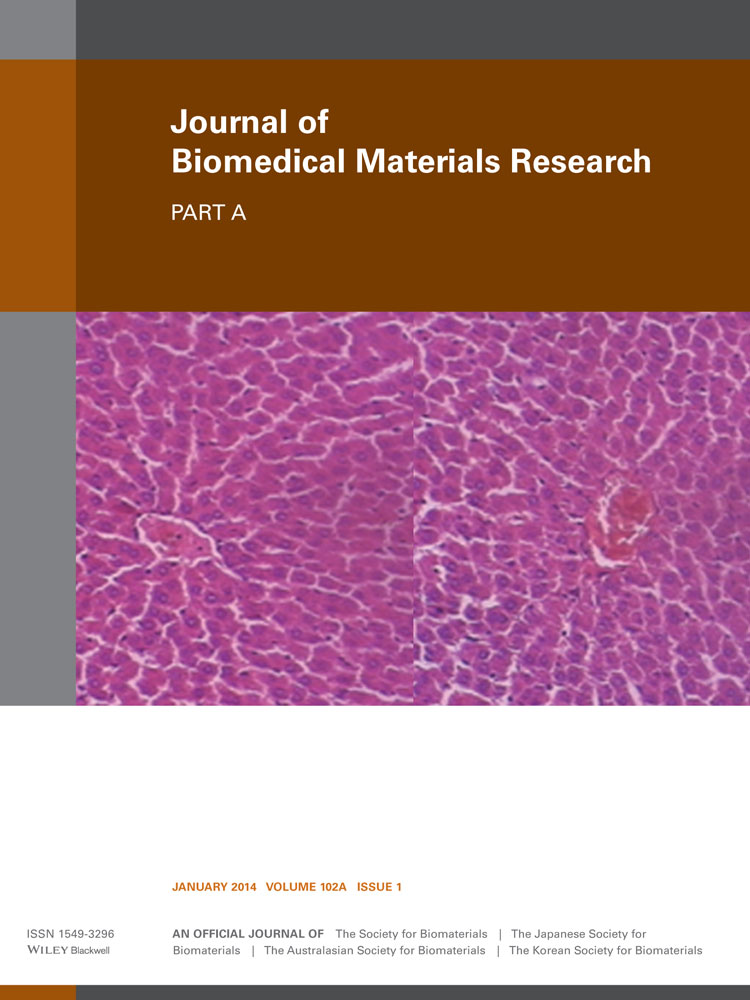Genipin-cross-linked thermosensitive silk sericin/poly(N-isopropylacrylamide) hydrogels for cell proliferation and rapid detachment
Abstract
To overcome release of silk sericin (SS) from semi-interpenetrating polymer network (semi-IPN) SS/poly(N-isopropylacrylamide) (PNIPAm) hydrogels, natural biocompatible genipin (GNP) was adopted as cross-linking agent of SS. The GNP/SS/PNIPAm hydrogels with various GNP contents were prepared by radical polymerization. Depending on GNP content, the resultant hydrogels present white, yellow, or dark blue. Required time of color change for GNP/SS mixture solution shortened with increasing GNP ratio. The GNP/SS/PNIPAm hydrogels present good oscillatory shrinking–swelling behavior between 20 and 37°C. The behaviors of L929 cell proliferation, desorption, and transshipment on the surface of hydrogels and tissue culture polystyrene were investigated by 3-(4,5-dimethy thioazol-2-yl)-2,5-di-phenytetrazoliumromide and scanning electron microscopy method. In comparison with pure SS/PNIPAm hydrogels, the introduction of certain GNP can accelerate cell adhesion and proliferation. Due to reversible change between hydrophobicity and hydrophilicity, by lowering temperature to 4°C from 37°C, L929 cells could spontaneously detach from the surface of hydrogels without the need for trypsin or ethylenediaminetetraacetic acid. The detached cells could subsequently be recultured. The prepared hydrogel and detached cells have potential applications in biomedical fields, such as organs or tissue regeneration and cancer or disease therapy. © 2013 Wiley Periodicals, Inc. J Biomed Mater Res Part A: 102A: 76–83, 2014.




